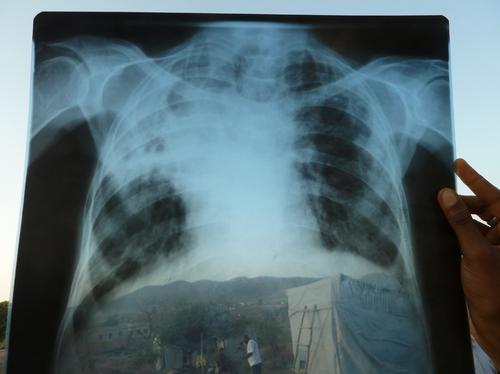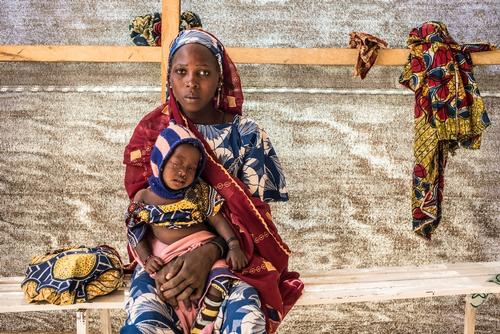Friday, 9am – Daniel Martinez, one of the three coordinators of MSF’s telemedicine service receives an alert on his mobile: the organisation’s team in Shabunda, Democratic Republic of Congo, has a question about a paediatric case they are treating – a five-day-old baby that they suspect has tetanus.
Immediately, Daniel forwards the question to one of the system’s more than 280 experts around the world, both MSF and external doctors, who will not take long to answer.
A few weeks earlier, MSF’s telemedicine service, launched in 2010, had reached its 3,000th case. During these six years, the use of the telemedicine platform – software that allows you to manage remote medical consultations with maximum confidentiality – has not stopped growing. At first, it was used timidly, but in the last year and a half the growth has been exponential.
Currently, an average of five to 10 cases are received a day. “When our colleagues in the field test the system they see that it is practical, functional and fast, and they use it again in the future,” explains Daniel, who, in addition to coordinating the service, also resolves issues over the computer as MSF’s paediatric adviser in Barcelona.
I was so impressed with both the quality and accuracy of the answers that I couldn’t stop using it.Daniel Martinez, MSF telemedicine coordinator
For the service to be functional 24 hours a day, Daniel works with two other coordinators based in Canada and French Guiana. On average, the coordinator takes 15 minutes to forward the query coming from any MSF project to the expert and the expert takes four hours and a half to respond to the team. Speed is one of the core values of the service but not the only one.
“I was so impressed with both the quality and accuracy of the answers that I couldn’t stop using it,” says Kay Hodgetts, an Australian doctor, who has been working for a few weeks in an emergency intervention to assist displaced people and victims of violence in Leer, South Sudan. Kay remembers her first assignment with MSF in Degabhur, Ethiopia. When she arrived there in mid-2015, she had never heard of this system but came across the access to it on one of the mission’s computers, tried it and hasn’t stopped using it since then.
Mohamed
Mohamed, 4, was one of the patients treated by Kay in Ethiopia with the support of telemedicine. “It was a particularly complicated case: the child was malnourished, had fever and pancytopenia (a reduction of red cells, white cells and platelets in the blood that is usually related to diseases that affect bone marrow), and was not responding to multiple lines of treatment.”
Kay, with the medical team in Degabhur hospital, used the telemedicine service and sent Mohamed's case history, details of how they had treated him, photos, a video and the results of a blood test. Over many weeks and with the help of many specialists, including a paediatric haematologist, they managed to do a bone marrow biopsy to rule out a malignant tumour and thus have more confidence in our line of treatment.
Fortunately, in this case, with the support of multiple specialists thanks to the telemedicine platform, they had a good result and Mohamed was discharged in two months.
“The great advantage of telemedicine is that our patients, despite being treated in places with limited resources, can access specialised care. Currently, widespread internet access in our projects helps bridge the gap between the level of care in the field and in large medical centres. In fact, it makes even more sense that we use telemedicine in these contexts because we have fewer diagnostic tools,” explains Kay.
Helping to compensate for the lack of doctors
In many of the countries where MSF works, plagued by conflict or with dysfunctional health systems, there is often a lack of health workers and rarely are there any medical specialists outside the referral hospitals. “A large proportion of our patients are children under five years old, but we work with few paediatricians,” says Daniel. “Children are not just small adults and they require specific care. Knowing that many of them will be attended by staff who have no specific knowledge, it is very important to have support such as telemedicine that can give doctors guidance in the most complicated cases.”
At the referral hospital in the district of Madaoua, in southern Niger, the telemedicine service has taken a further step in this direction. Every year, the country faces a peak in malaria and malnutrition from May until September, when the number of paediatric beds triples, reaching 300. For months now, doctors at the hospital have been sending their queries about cases via the telemedicine platform and then, every Thursday, they connect to Niamey, Dakar and/or Barcelona to discuss the most complicated cases in depth with MSF specialists via videoconference.
“The doctors have already received the answer to their question via internet, but with these live sessions they can discuss the cases in more depth and tailor treatments as appropriate. It also serves as training for these doctors who, of course, have more limited technical resources than in more developed countries,” says Cristian Casademont, medical coordinator of MSF projects in Niger. Connection problems, however, can occasionally make it difficult to do the weekly sessions.
The most repeated query on the telemedicine platform is also related to the lack of specialists, in this case radiologists. Many of MSF’s HIV/AIDS and tuberculosis projects use the platform to correctly interpret chest x-rays and thus confirm the clinical suspicion of tuberculosis.
Access to highly specialised expertise
“Don’t amputate. Children’s capacity for recovery and adaptation is tremendous. So just check the infection, try to close or graft the wound, and put the wrist in the correct position with a sling. Keep me informed.” This is the message an MSF team in the Democratic Republic of Congo received shortly after sending a photo of an 8-year-old patient with a terrible wound in one hand and wrist. Their question was desperate: “We need to know whether plastic or orthopaedic surgery will be possible or if the best option is to amputate the hand.”
Enquiries about surgery represent more than 10% of the total received by the telemedicine service and, thanks to them, doctors on the ground can receive very specialised information for their cases from, for example, orthopaedic surgeons or ophthalmologists. With this information, both in surgery and other specialities, the number of diagnostic tests, treatments and unwarranted referrals can be reduced, which are often difficult to do in these contexts and also disrupt the daily lives of patients. The information helps to improve patient care, even in the most difficult cases.
“Sometimes, we receive enquiries about cases that have no therapeutic option. They are sad situations but it is still important that the doctor has this information so they don’t give false hope to patients and their families, and can focus on giving them the best care possible,” says Daniel, who is convinced of the potential of telemedicine and smiles at receiving an email from Kay from South Sudan. “I just wanted you to know: telemedicine is installed and running in Leer; and it has already been helpful.”
MSF’s telemedicine system was launched in April 2010, but it has been in the last two years that its use has grown most; in February 2016, the platform received its 3,000th case from the project in Aweil, South Sudan. In 2015, MSF launched its first project depending heavily on telemedicine – a TB programme that for diagnosis relies on the support of radiologists consulted through the system.





